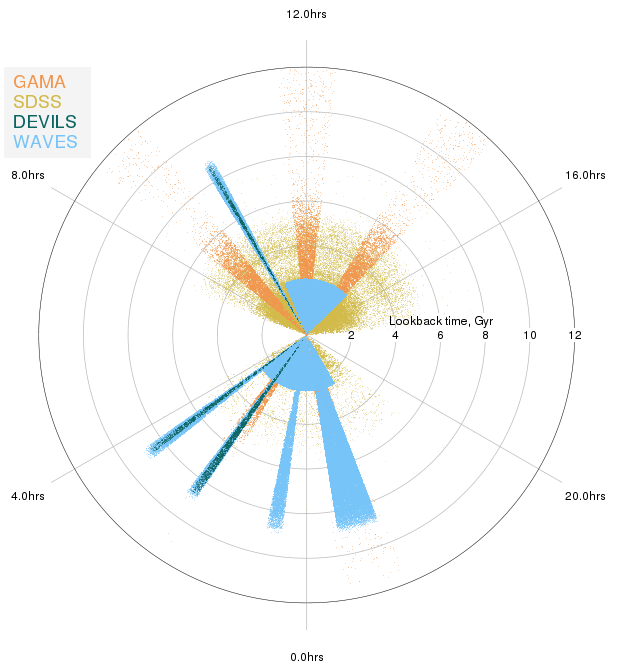Background
Just like you and I the life of a galaxy is fundamentally shaped by where it lives. Galaxies which reside in isolated regions of space, never coming into contact with another system, have a very different life to those with live at the centre of bustling clusters, where interactions are frequent and violent. These varying environments can induce a complex web of influences on the properties of galaxies, shaping how they form new stars, determining the frequency of mergers, triggering Active Galactic Nuclei (AGN) activity, and fundamentally altering their morphological and structural characteristics.
Despite being of paramount importance to our understanding of how all galaxies formed and evolved, until recently our knowledge of how, why and to what degree different environments shape galaxies has been observationally restricted to local Universe (i.e. a single epoch). This means that we know the end point correlations between environment and galaxy evolution, but not thier causation. To explore this further we must look to new state-of-the-art projects and analysis techniques which will open up our ability to trace how galaxies evolve in different environments over billions of years.
Within our group we are leading a number of next generation multi-wavelength galaxy redshift surveys aimed at exploring the co-evolution of galaxies and environments out into the distant Universe. We also develop new software analysis techniques and methodologies to maximally exploit these data.
Projects in this area are based around the Deep Extragalactic VIsible Legacy Survey (DEVILS) and 4MOST Wide Area VISTA Extragalactic Survey (WAVES), but will also combine data from some of the world’s foremost facilities, including JWST, HST, Subaru, and SKA precursors MeerKAT and ASKAP.
Potential Projects
For 2023/2024 we are offering projects in the following areas. However, this is a non-exhaustive list and if you have a different project or research direction that would fit into this area, please contact us to discuss further:
- How is the morphological and structural evolution of galaxies driven by local environment? Using state-of-the-art HST and JWST imaging to explore how the structural growth of galaxies has changed over the last 8billion years, and how environment/interactions significantly governs this process, resulting in the morphology-density relation we observe today.
- The impact of group-scale environments of the evolution of star-formation and stellar mass growth. Exploring how the star-formation history of a galaxy is fundamentally linked to the dark matter halo in which it resides, and how this link evolves over cosmic time.
- The link between Active Galactic Nuclei (AGN) activity and environment from merger to cluster scales. Determining the frequency of AGN (derived from multiple observational approaches) as a function of environment, leading to an understanding of the processes that trigger AGN activity and their impact of galaxy evolution processes.
- Determining the origin of luminous material in and around galaxies. Using a combined spectral energy distribution and structural fitting approach (called ProFuse) and state-of-the-art HST and JWST imaging to determine the formation origin of the sub-components of galaxies and their link to local environment.

The DEVILS and WAVES surveys explore completely new parameter spaces in the early Universe and are specifically designed to target the co-evolution of galaxies and environment.
USeful Links/Further Reading
- Deep Extragalactic VIsible Legacy Survey (DEVILS)
- Wide Area VISTA Extragalactic Survey (WAVES)
- 4m Multi-object Spectrograph Telescope (4MOST)
- Some of our key publications in this area:
- Survey descriptions: Davies et al (2018), Driver et al (2020), Bellstedt et al (2020), Driver et al (2022)
- Tracing galaxy environments: Robotham et al (2012)
- Measuring galaxy properties and their evolution: Davies et al (2016), Davies et al (2017), Driver et al (2018), Bellstedt et al (2020), Davies et al (2021), Bellstedt et al (2021)
- Galaxy environments and how they impact galaxy properties: Robotham et al (2014), Davies et al (2015), Davies et al (2016), Davies et al (2019a), Davies et al (2019b)
- Software tools for measuring galaxy properties: Robotham et al (2017), Robotham et al (2018), Robotham et al (2020), Robotham et al (2022)
- Some examples of past ICRAR student’s publications in this area:




